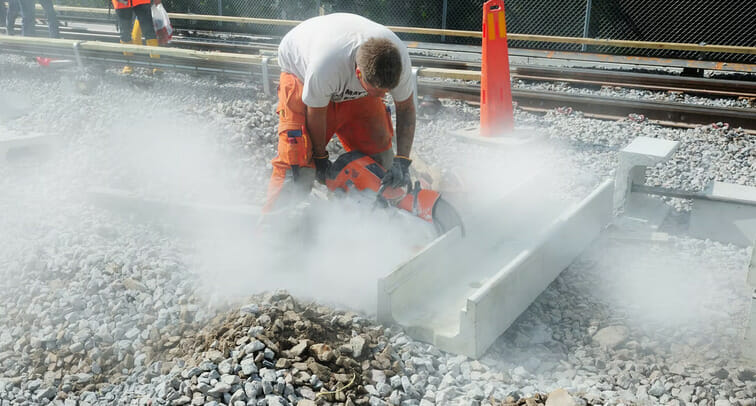
There are a wide range of hazards that working in construction can expose workers to. Some of the most serious and risky hazards are those that are airborne and breathed deep into the lungs, resulting in potentially life-threatening conditions. It is an employer’s job to ensure that all personal protective equipment is provided, in good working order, and used by employees. This is the most effective way to prevent construction-related lung issues from developing.
It is important to understand the materials that can cause the most damage to the lungs of someone working in construction. This will give you the knowledge and tools you need to implement the best possible health and safety practices in your business.
Asbestos
Asbestos is one of the deadliest fibres that workers could be exposed to, causing various lung-related issues such as cancer or asbestosis. These result from the scarring that the tiny particles of asbestos can cause to the lungs when breathed in for extended periods of time.
It is vital to protect workers’ lungs from asbestos by carrying out the proper inspections to identify when asbestos is present and providing employees with the right air filtration equipment to prevent exposure. Training should also be provided to employees that are working in areas known to contain asbestos.
Silica
Silica is another microscopic fibre that can cause serious damage to the lungs over time. It can be found in many construction-related areas, such as in foundries and glass or stone manufacturing facilities. Silica causes scar tissue to form in the lungs, leading to a condition called silicosis. Ensuring proper ventilation, the use of wet methods for cutting materials, and respirators can help prevent workers from inhaling a dangerous level of silica.
Dust
Dust is the most common hazard for lung health in construction, as it is almost universal. No matter what work is being done, dust can be created. The type of dust made can have a big impact on how detrimental it is to lung health. A dust control system can be invaluable for protecting workers’ lungs and maintaining a safe, comfortable work environment. Find out more about dust control in construction from this article by industry experts, The Dantherm Group.
Smoke
Smoke presents many well-documented dangers to our lungs, and even a small amount of smoke inhalation can cause serious health problems. If working in an environment that’s likely to get smoky, there should always be adequate ventilation and respirators provided to all workers. Care must be taken when anyone is working with fire to ensure the resulting smoke doesn’t cause lasting damage to workers’ health.
Coal Dust
Coal dust inhalation was once a much more common issue in the UK than it is today. This is thanks to the much-reduced rate of people working in coal mines without adequate PPE. Coal dust can cause a number of health issues for the lungs, so knowing the signs of coal worker’s pneumoconiosis is crucial. This can include coughing, breathlessness and coughing up black mucus.
